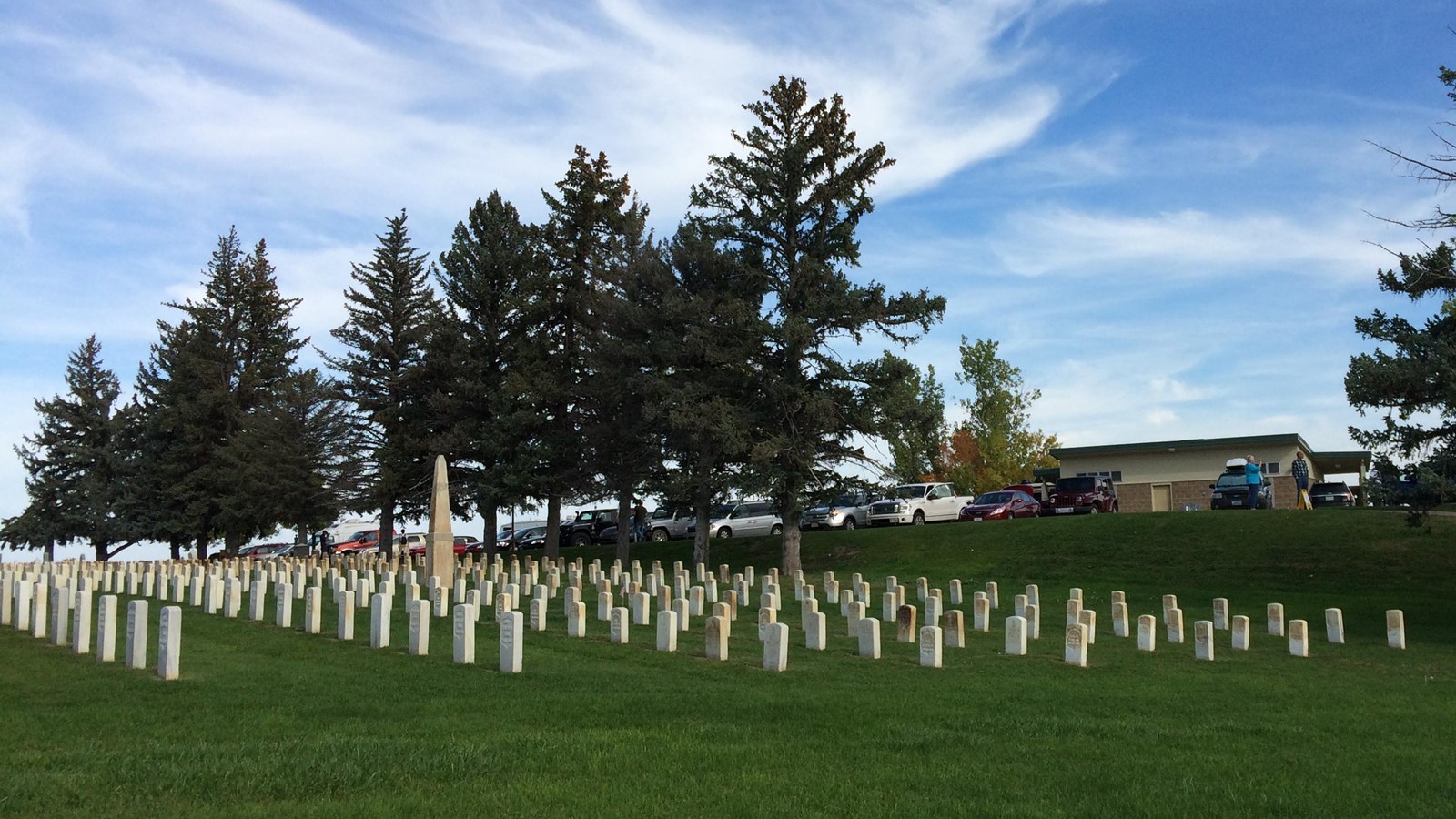Last updated: May 13, 2022
Place
Custer National Cemetery

NPS Photo
Information Kiosk/Bulletin Board, Parking - Auto, Parking - Boat Trailer, Parking - Bus/RV, Restroom, Restroom - Accessible, Toilet - Flush, Trash/Litter Receptacles, Wheelchair Accessible
Your visit to the Custer National Cemetery at Little Bighorn Battlefield is like a trip through time. You will relive the drama of America's coming of age as you walk along the graves of known and unknown veterans of our nation's wars, including women and children from isolated frontier posts, Indian scouts, and Medal of Honor recipients.
Like many other national cemeteries, Custer National Cemetery was created after those killed in battle were already buried here. Between 1877 and 1881, troops garrisoned at nearby Fort Custer (modern-day town of Hardin, Montana) regularly gathered remains for reburial, recovered graves, and policed the battlefield for exposed bones. The first of these details disinterred and collected all identified officers, except Lieutenant John Crittenden. Lt. John Crittenden was left where he fell at the request of his family until 1932. General Custer was reinterred at West Point while most of the others were shipped to Fort Leavenworth, Kansas and other private cemeteries back east at the request of their families.
In order to protect these graves, General William Tecumseh Sherman issued General Order No. 78 in 1879 . This designated part of the Custer Battlefield as a national cemetery.
